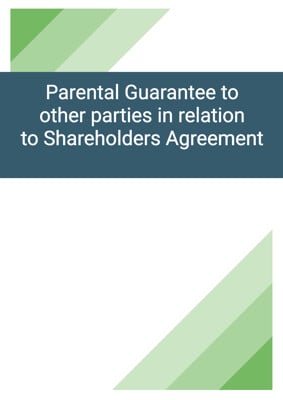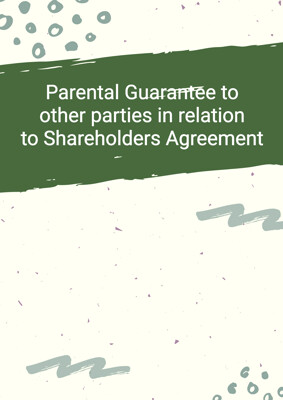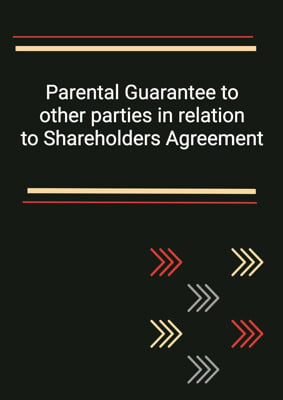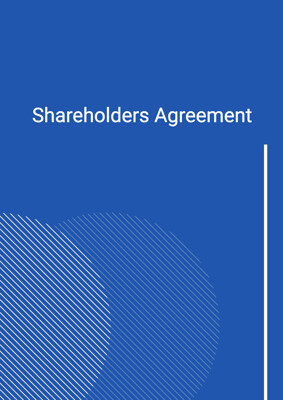How to Tailor the Document for Your Need?
01
Create Document
Fill in the details of the parties. You can click the "Fill with Member’s Information" button to complete it with information saved to your account.
02
Fill Information
Please fill in any additional information by following the step-by-step guide on the left hand side of the preview document and click the "Next" button.
03
Get Document
When you are done, click the "Get Document" button and you can download the document in Word or PDF format.
04
Review Document
Please get all parties to review the document carefully and make any final modifications to ensure that the details are correct before signing the document.
Document Preview
Document Description
The Shareholders Agreement is a legally binding document that outlines the terms and conditions governing the relationship between the shareholders of a company. It is entered into by Party 1 and Party 2, who have agreed to jointly invest in a company and set out the terms governing their relationship as shareholders. The agreement is important as it establishes the rights and obligations of the shareholders and provides a framework for decision-making and governance within the company.
The agreement begins with an interpretation section, which defines key terms used throughout the document. It also includes provisions regarding the purpose of the company, the characteristics of the company, capital and further finance, the board and management, reserved matters, financial matters, information and reporting, confidentiality, non-competition, regulatory matters, relationship with the party's group, tax matters, transfer of shares, termination events, default, transfer terms, parent company further assurances, non-assignment, waiver of rights, amendments, invalidity, no partnership or agency, announcements, costs, entire agreement, conflict with articles, notices, settlement of disputes, counterparts, and no rights for third parties.
The agreement sets out the rights and responsibilities of the shareholders, including their voting rights, obligations to provide further finance if required, and restrictions on transferring shares. It also includes provisions for the appointment and composition of the board of directors, the handling of reserved matters that require the approval of both parties, financial reporting and information sharing, confidentiality obligations, non-competition clauses, and procedures for resolving disputes.
Overall, the Shareholders Agreement is a crucial document for ensuring transparency, accountability, and effective decision-making within a company. It provides a clear framework for the rights and responsibilities of the shareholders and helps to protect their interests.
How to use this document?
1. Review the Shareholders Agreement carefully to understand its terms and conditions.
2. Ensure that all necessary information, including the names and addresses of the parties, is accurately entered into the agreement.
3. Familiarize yourself with the definitions section to understand the meaning of key terms used throughout the document.
4. Pay attention to the interpretation section, as it provides important guidance on how certain provisions of the agreement should be understood.
5. Understand the purpose of the company and the business it intends to carry out, as described in Clause 2.
6. Review the provisions regarding capital and further finance to understand the rules for issuing new shares and obtaining additional funds.
7. Familiarize yourself with the composition and responsibilities of the board of directors, as outlined in Clause 5.
8. Take note of the reserved matters listed in Clause 6, as these require the approval of both parties.
9. Understand the financial reporting and information sharing requirements set out in Clause 8.
10. Ensure compliance with the confidentiality obligations outlined in Clause 9.
11. Review the non-competition clause in Clause 10 to understand the restrictions on competing with the company.
12. Familiarize yourself with the regulatory matters and obligations set out in Clause 11.
13. Understand the relationship between the company and the parties' respective groups, as outlined in Clause 12.
14. Review the tax matters provisions in Clause 13 to understand the parties' obligations in relation to taxation.
15. Familiarize yourself with the provisions regarding the transfer of shares in Clause 14, including the restrictions on transfer and the rights of the continuing party to purchase shares.
16. Take note of the termination events listed in Clause 15 and the procedures for resolving disputes.
17. Understand the obligations and responsibilities of the parties under the agreement, as outlined in Clause 18.
18. Ensure compliance with the notice requirements set out in Clause 28 when communicating with the other party.
19. Seek legal advice if you have any questions or concerns about the Shareholders Agreement or its implications for your rights and obligations as a shareholder.
Not the right document?
Don’t worry, we have thousands of documents for you to choose from:


























